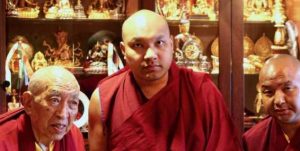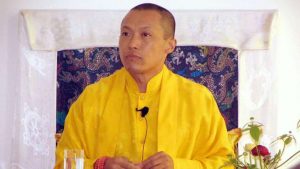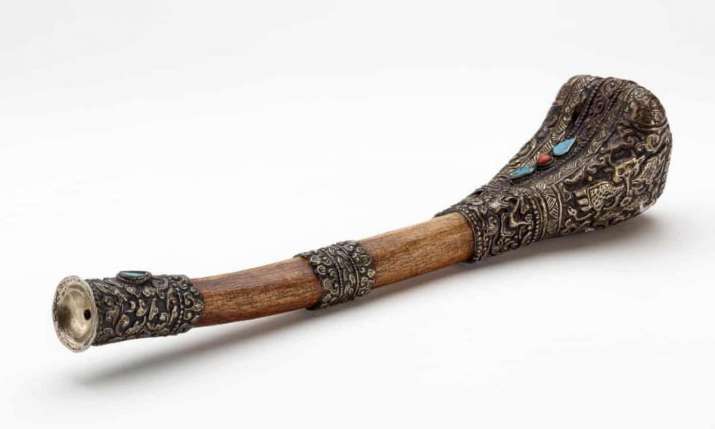
Sacred objects from Tibetan Buddhism will be on display at the British Museum in London, from 23 April–26 July. The exhibition, titled “Tantra: Enlightenment to Revolution,” is curated for the museum by Dr. Imma Ramos, a faculty member in the areas of South Asian and Himalayan art.
The aim of the exhibition is, in part, to demystify the objects, many of which are made from human bones. The artifacts also draw attention to the power of womanhood in Tibetan Buddhist thought and practice. While death plays a central role in the rituals in which the objects were used, Ramos notes that the purpose was to turn the practitioner’s mind toward the preciousness of this life. “There is nothing nihilistic about that,” said Ramos. “It is very much celebrating life. It is a much more positive, holistic attitude to death, which is very different to the West, where there is a very negative mindset around mortality.” (The Guardian)
The term tantra is derived from the Sanskrit root tan meaning to stretch out or to weave, offering a sense of an intricately interwoven pattern. In Tibetan Buddhism, it is often tied to hidden or secret (esoteric) teachings, as opposed to the body of exoteric teachings provided in the sutras. While sutras tend to offer a path, suggesting the image of a linear spiritual progression, tantra offer practitioners opportunities for awakening here and now and from all directions, hence the use of items generally believed to be impure, such as human bones.
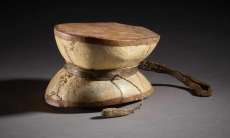
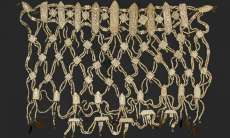
While some aspects of tantric practice would have repelled practitioners, it also served to critique social norms and to open paths to people who were excluded by the institutions of their time. As Ramos writes for the British Museum Blog: “Tantric initiation was open to people from different social backgrounds. This challenge to the caste system made tantra especially appealing to women and the socially marginalised.” (British Museum)
As Westerners encountered tantra, the associated practices were quickly linked to witchcraft and devil worship. As the scholar Donald Lopez documents, the Capuchin missionary Orazio della Penna described Tibetan tantric literature in 1730: “I have not read this infamous and filthy law of Khiute [tantra], so as not to stain my mind, and because it is unnecessary. For to confute it one must know in the abstract of what it treats, and there is little good or indifferent that is not mixed up with much more witchcraft, magic incantations, and obscenity.” (Prisoners of Shangri-La, 38)
Thupten Kelsang, an Oxford doctoral student who has assisted with the exhibition, welcomed the opportunity to educate the public about the correct meanings and usage of the items. “These are esoteric objects, very specialised objects and can sometimes be taken out of context. I’m happy that, with this exhibition, Tibetans are finally coming forward and talking and sharing their opinions and life histories and experiences.” (The Guardian)
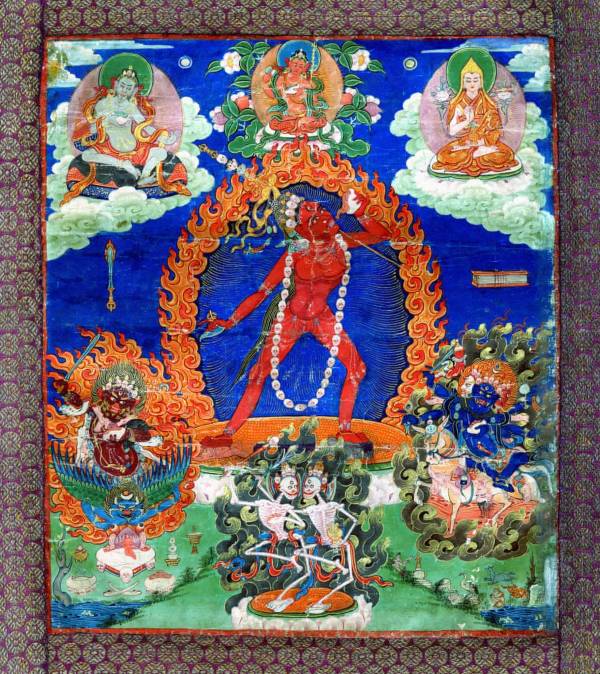
Ayesha Fuentes, a research student at London’s School of Oriental and African Studies (SOAS) with a focus on the use of human remains in Tibetan ritual, likewise praised the educational opportunity afforded by the exhibition as an opportunity to counter the centuries-old, but still repeated language disparaging tantric objects and practices. “That language of devil worship and necromancy and sorcery . . . it originated from colonial scholarship and was disseminated all through the anglophone world. In the [United] States, where I’m from, museum records everywhere will still bring up that language,” she said. (The Guardian)
The Tibetan tantric items at the British Museum are part of a larger exhibition that examines the history of tantra, which originated in India prior to its introduction to Tibet and can be found in other Indian religions, including Hinduism and Jainism.
References
Lopez, Donald S. Jr. 1998. Prisoners of Shangri-La: Tibetan Buddhism and the West. Chicago: University of Chicago Press.
See more
Tibetan objects made of human remains to go on show at British Museum (The Guardian)
What is Tantra? (The British Museum)






